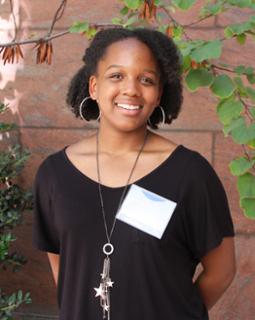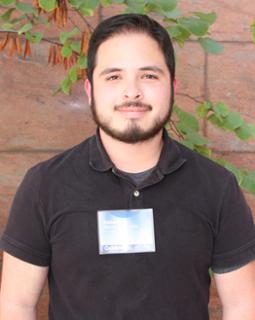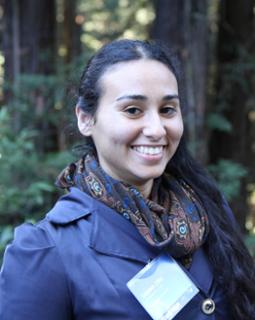COHORT 5
South Scholars
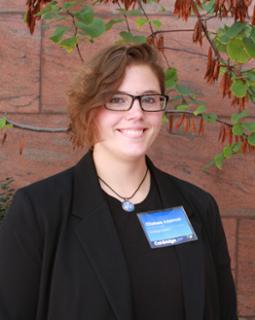
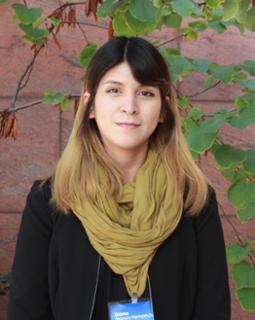
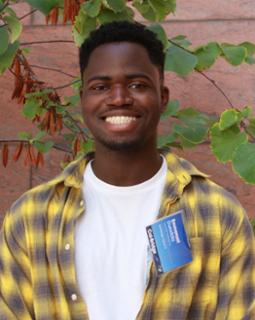
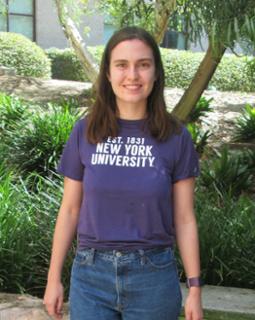
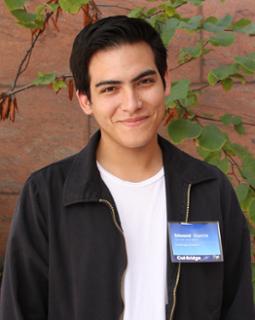
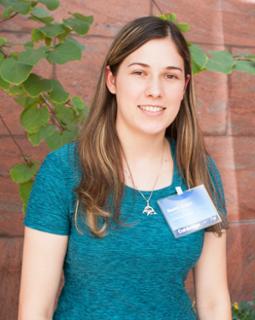
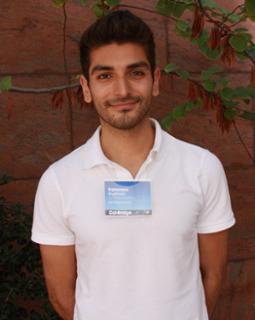
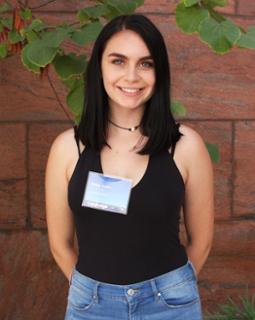
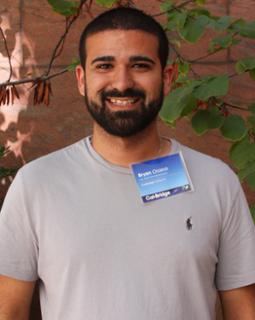
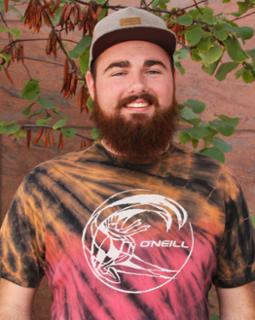
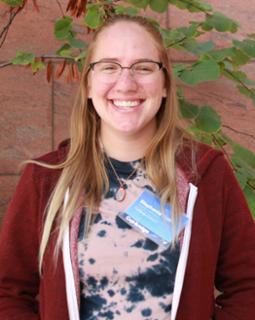
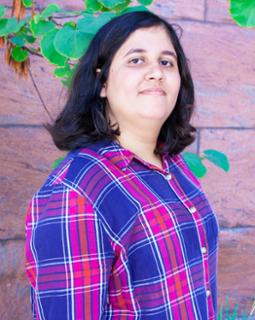
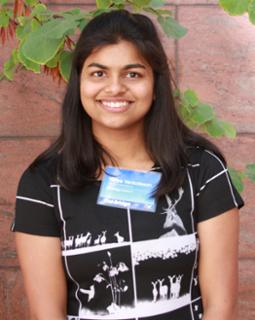
Chelsea Adelman's Biography
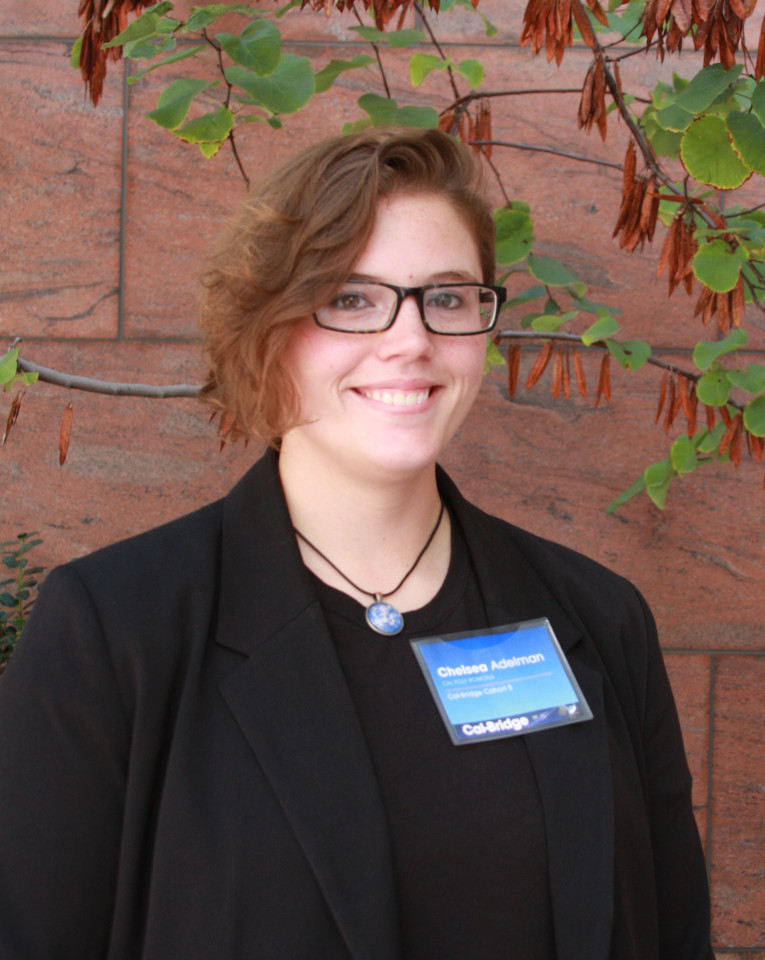
I am Chelsea Adelman, and I am a rising junior at Cal Poly Pomona. I study physics, and I plan to get my PhD in physics or astrophysics.
My journey is a bit different than most as I did not start as a STEM major. I enrolled in college at Mt. San Antonio College (SAC) as a sign language interpreter, taking classes for interpreting, where I completed American Sign Language 1-5. To fulfill my GE requirements, I took a general astronomy class which changed everything for me. I fell in love with astronomy. It’s intriguingly bizarre. Astronomy is a science where beauty, wonder, and peculiarities coincide. The other aspect that draws me in is there is still an abundant amount of questions to be answered.
When I first started attending Mt. SAC, though motivated, the thought of getting an associates seemed daunting. After changing my major, I was surrounded by people that inspired and encouraged me to strive for more. Even though I started at ground zero (with my first class toward transfer as a physics major in geometry), I find myself excited to attain a doctorate in astrophysics or physics. Though I see the long journey ahead, what drives me to succeed is my passion for astronomy, looking back and seeing how much I have achieved, as well as seeing the end goal, what I am working hard for. I am beyond excited!
I heard about Cal-Bridge through professors that I worked with when I was a student at Mt. SAC. Cal-Bridge is a program that benefits a wide range of circumstances. It seeks out first generation students, underrepresented minorities, and/or females. I applied because I am a first generation student, female, and have an interest in astronomy and physics. This program is amazing! Some major benefits are that it has allowed me to stop working to focus on my schoolwork. They look at the financial aid a student receives and awards accordingly so the main focus is school. They have helped immensely, and another perk of Cal-Bridge is that each student in the program gets two mentors: one at their home CSU and one at a UC. It is required to meet with mentors twice a month. At first this did not seem too appealing, but I discovered that I am a person that needs deadlines and structure and for me this has been one of the greatest benefits of Cal-Bridge.
Though improving, women have been historically underrepresented in STEM. For a long time I have struggled with imposter syndrome but, through Cal-Bridge, have gained confidence in myself and my abilities to succeed. Another benefit of Cal-Bridge for which I could not be more grateful is the support. If the student needs a tutor, they provide them. They also offer support and encouragement in the student’s personal life. The student’s success is their priority, and I cannot be more grateful for the kindness and support that this program has offered me.
Emmanuel Duradola's Biography
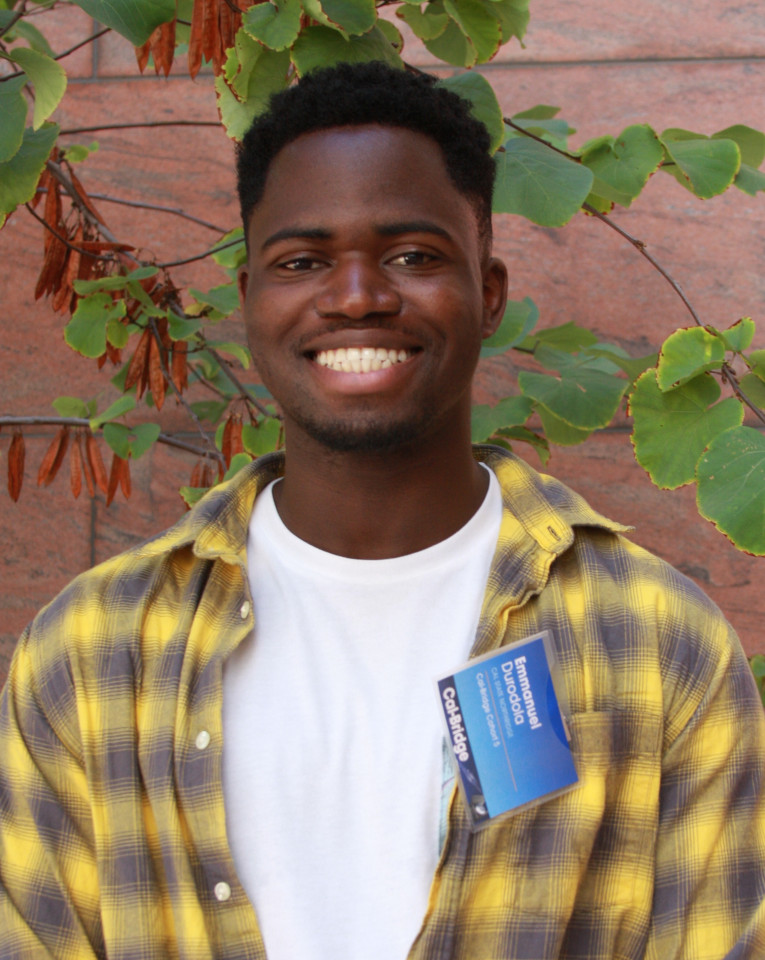
My name is Emmanuel Durodola, I am currently studying astrophysics at california state university of northridge. My biggest motivation for pursuing a physics degree would be my ever present want for an understanding of the world around me. Ever since I took my first physics class in high school, I had always been infatuated with various physical phenomenon, and it was really mind blowing for me that I could understand and even make calculation modeling many physical phenomenon. It was after this class that I started to become more inclined to read physics articles, and imagine the way everything works. Another reason why I got involved with physics, was watching random videos about space on youtube, and just developing an urge to understand what it is that is out there in the vast emptiness of space.
I applied to calbridge, because I had heard about how much help it offers with getting students into various summer programs around the country. However, upon being accepted to the program, my eyes were opened to the multitudes of opportunities that the program offers. The first obvious been the financial assistance, which was really helpful in reducing the burden of worrying about finances during undergrad. Another amazing benefit of the program is the mentor system, a system in which a student is paired with two physics professors, one in the home CSU school and other at a UC school. This to me was honestly one of the most pivotal parts of the program. I honestly can not put into words how uplifting it was to have two accomplished individuals in their field constantly giving pep talks, reminding you that they believe in you, and that you can do it succeed. It also created a channel to see first hand what it is like to be in the field.
One thing, amongst many that I will take away from the program is the power of outreach. Through my past three years as an undergrad, there were many moments in which I thought I would not be able to keep going, and many more moments where I would let my uncertainties about the future affect my performances in classes. However through the connection I made with my mentors, I have been able to get past these mental blocks and gain some confidence both in classes and in the future. Another benefit of the program is the reassurance you get from seeing past cohorts get into various PhD programs. It takes away from the terrifying stories of rejection from programs. It creates a positive environment fueled by the idea that if they could do it, then I could too. Personally, I wish this program had a bit more funding so that they could include the sophomore students also, because for someone like me having guidance like this program would have exponentially benefitted me. The program in my opinion is nothing more than a group of amazing people who truly believe in you, want you to succeed, know how you can succeed and will go above and beyond to make sure you succeed.
Jordan Ealy's Biography
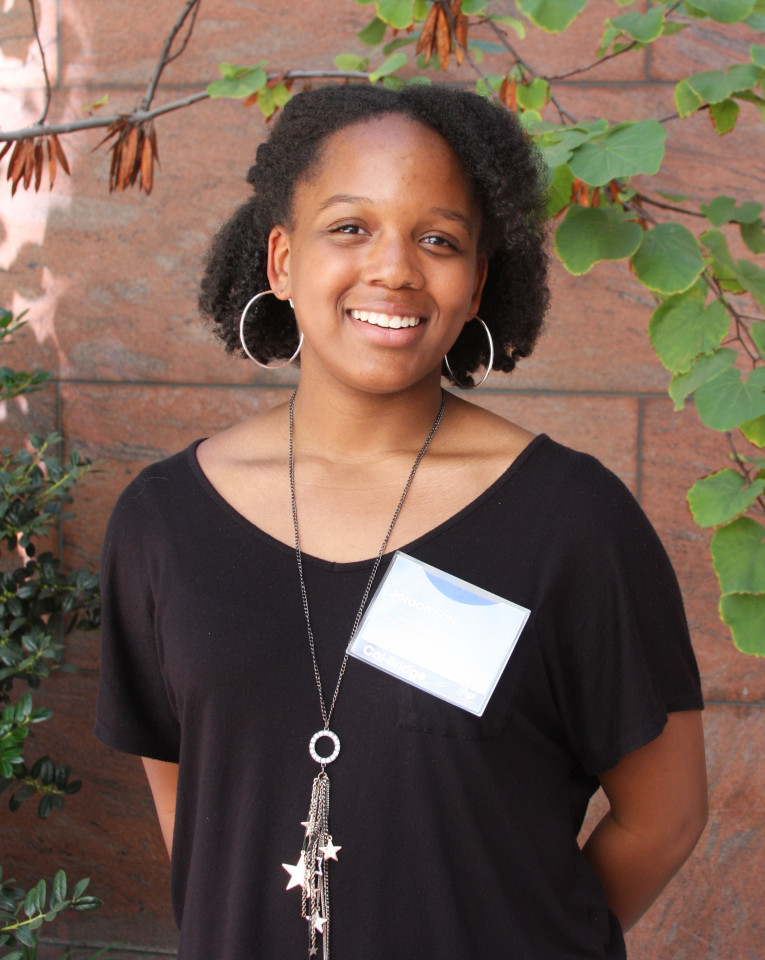
Hey! My name is Jordan Ealy and I am currently a senior at San Diego State University pursuing a B.S. in Astronomy. I fell in love with Astronomy at a really young age and have stuck with it. There’s always something new and so much of what we think we know we don’t know for sure. I always wanted to be a part of the forefront of science – asking questions that didn’t yet have answers. Now that I am finally doing research, I have the ability to look for those answers myself. I want to pursue a PhD in Astronomy because it would allow me to continue to research on my own terms and provide a foundation to be an advocate for women and minorities in science.
I applied to Cal-Bridge because going into college I knew I was going to need all of the help I could get. One of my father’s sayings is ‘It’s not what you know, it’s who you know.’ When my department head emailed me about this program, I was super excited about the prospect of meeting new people from all over. Not just faculty but the other members of my cohort. Being a part of a group with such a diverse background brings so many different perspectives and mindsets together. I am never just learning from the workshops that we attend; I am also learning from my cohort.
Hannah Fejzic's Biography
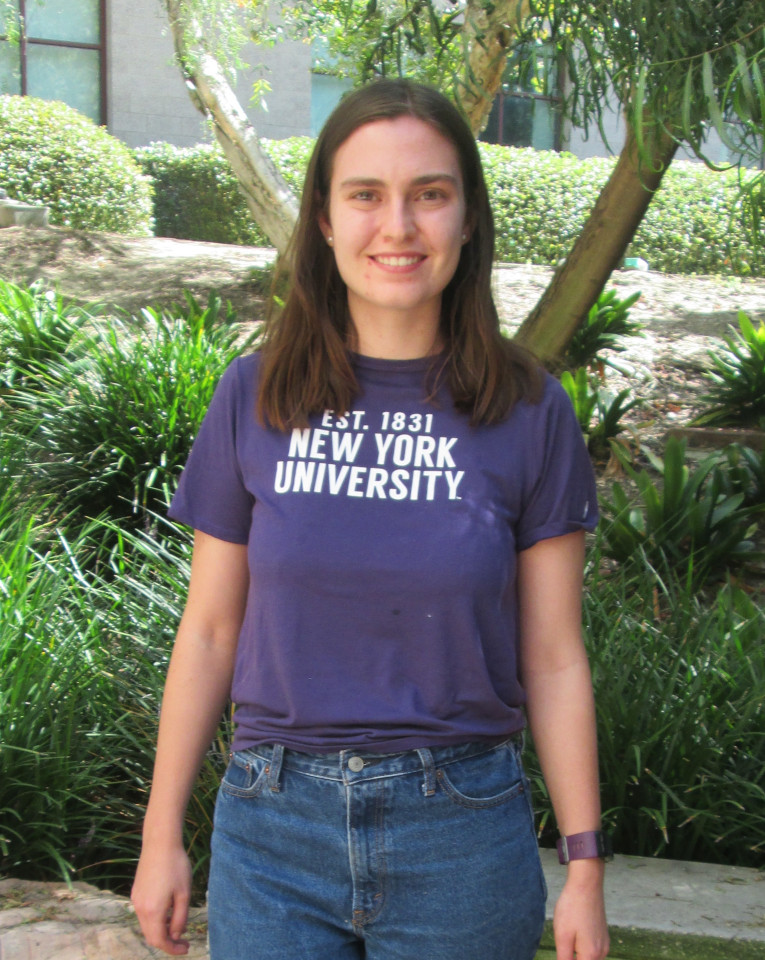
I am Hannah Fejzić. I am a chemistry and applied physics major at California State University, San Bernardino. I started off college as a a chemistry major because I liked chemistry in high school. Chemistry explained everyday phenomena like how cooking worked. In fact, I used to hate physics! I thought physics was only kinematics and I have no interest in calculating the final velocity of falling objects. Then, I learned that physics was much broader than kinematics and could explain more of the background of chemistry, so I became a physics major too. I want to pursue a PhD in physics because I like physics research. I prefer physics research over chemistry research because I found chemistry research is focused more on sample preparation and physics research focuses more on sample measurement. I like the challenge of discerning signal from noise in sample measurements.
I applied to Cal-Bridge because I wanted to be a part of a program that held me accountable for reaching my goals, particularly my goals of finishing a physics degree and applying and matriculating to a physics PhD program. Cal-Bridge requires bimonthly mentoring meetings that force me to reflect how I am feeling about my course-load. When needed, Cal-Bridge provided me with tutors for my classes which helped me grasp a better understanding of the material. Additionally, Cal-Bridge has deadlines for when to take the physics GRE, the general GRE and to write my personal statement. These deadlines make the process of applying to graduate school seem much less intimidating. One perk of Cal-Bridge is that it makes applying for graduate school more affordable because it covers the costs of taking the physics and general GRE plus half of graduate school application fees.
One of the things I struggle with is imposter’s syndrome, or the feeling of not being as good or as interested in physics as everybody else. Cal-Bridge has helped reduced my feelings of imposters’ syndrome. Cal-Bridge gave me a cohort of students and faculty members who emphasize with struggling with upper division physics classes. We have monthly meetings where I get to socialize with the Cal-Bridge students from across the Southern California CSU’s and whine about our struggles. At my bimonthly mentoring meetings, my faculty mentors agree with and offer advice on how to take difficult classes, so I feel less alone and helpless. Additionally, Cal-Bridge will find and pay for a physics graduate student to Skype-tutor me on classes so I can strengthen my physics skills.
Francisco Guzman's Biography
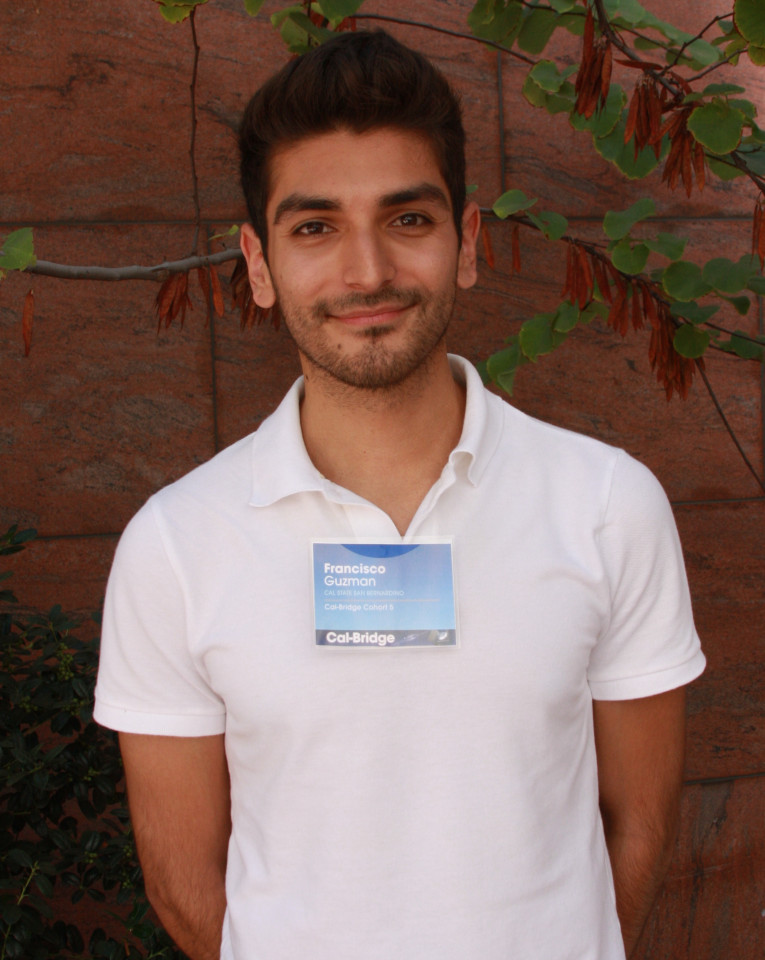
Bryan Orozco's Biography
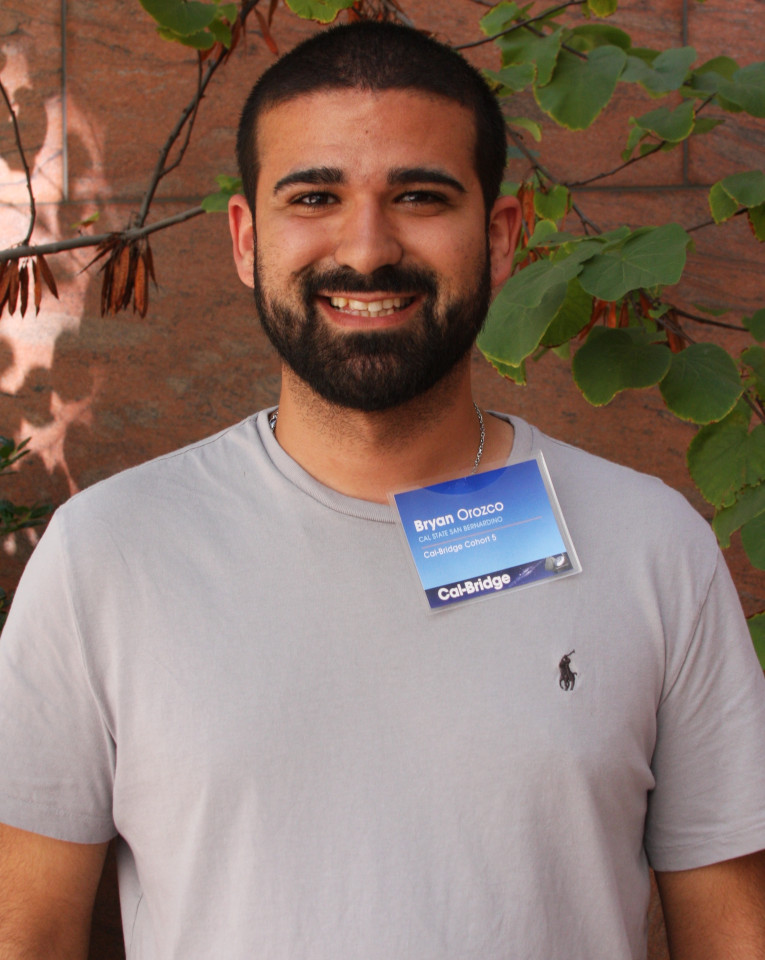
My name is Bryan Orozco and I am an applied physic major a California State University San Bernardino. Originally education was not a goal for me growing up since neither of my parents graduated from high school. They were unable to help me in my academics since English was a foreign language to them. Through the course of my life, I have met many people who inspire and motivate me to continue my education. At a young age, I realized I really enjoyed math and problem-solving. As a result, I decided to become a physics major, since it encompasses both math and problem-solving.
I applied to the Cal-Bridge program as an opportunity to improve my chances of attending graduate school. Cal-Bridge provides many workshops to prepare underrepresented students on applying to graduate school. Some workshop topics include: Growth Mindset, Python, graduate school requirement, and personal statement editing. The program also offers tutoring for upper division physics courses, which I have used to maintain my A grade level. Another advantage of being a Cal-Bridge scholar is that you are guaranteed a summer internship by applying to California-Arizona Minority Partnership for Astronomy Research and Education (CAMPARE). After applying to CAMPARE, I was selected to conduct research at Stanford University. At Stanford University, I am currently collaborating on a dark matter detection experiment at Stanford Linear Accelerator Center. Moreover, Cal-Bridge offers financial assistance for two years in undergraduate and one year at a UC PhD program. Having this grants me the freedom to focus on my academics and research. The program assigned me two mentors, one at your home institution and another at a UC institution. Having mentors to talk with has made it easy to focus on my academic goals during the school year. Since joining Cal-Bridge, I have a deeper understanding on what is necessary to apply to a Ph.D. program and what it takes to become a successful Ph.D. student.
As a result of being a Cal-Bride scholar, I am now a competitive candidate for a Ph.D. program in light of my strong GPA and my comprehensive experience of research. Once I receive my Ph.D. in physics, I plan to conduct research on quantum computers, which run on qubits that allow them to process information 100 million times faster than the average laptop. I either want to work with IBM, Google, or be a professor at a university that focuses on quantum computers. The reason why I want to work with these computers is that I believe this computer will help us understand the quantum field, which could open the doors to many possibilities. In the future quantum computers may help us solve unanswered problems such as a cure for cancer. There are endless possibilities, and this is the way I want to help develop quantum computers. Due to Cal-Bridge, as a first-generation physics scholar, I will successfully attend graduate school and work on the crucial human problems that quantum computers have the potential to solve.
Roberto Tejada Arevalo's Biography
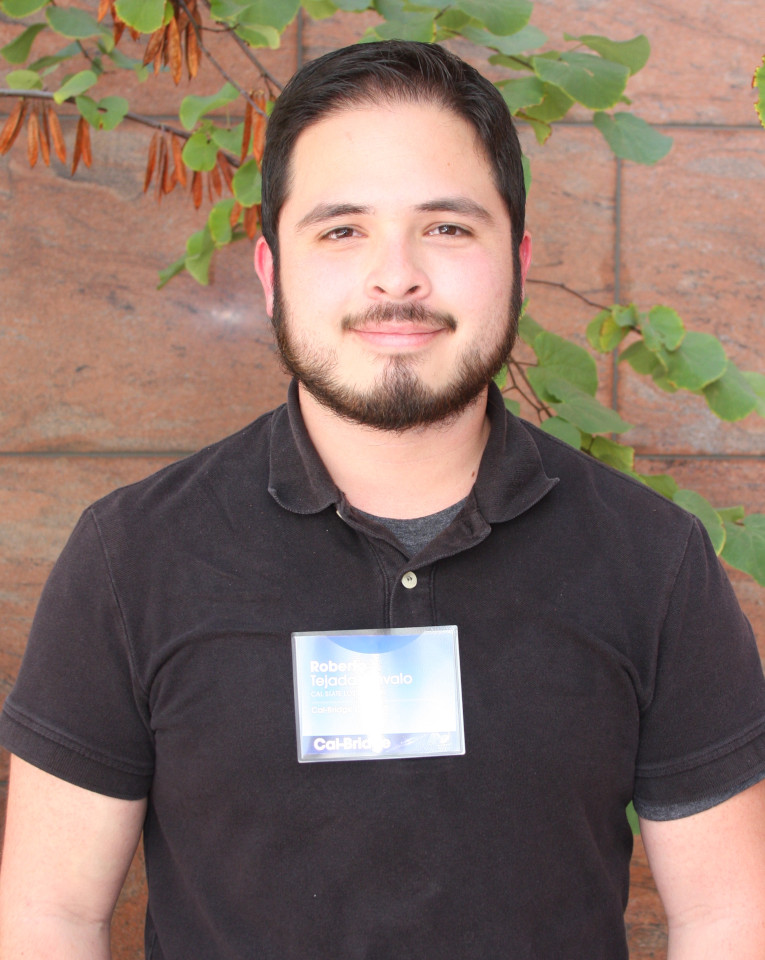
My name is Roberto A. Tejada Arevalo, and I am currently enrolled at California State University, Los Angeles (CSULA) as a Physics B.S. major. I am a Deferred Action for Childhood Arrivals (DACA) recipient and AB540 student. My mother brought me from El Salvador to the United States when I was nearly ten years old. I left school for two years and worked at a Taco Bell and became an activist to raise the minimum wage in California. I attended the Los Angeles City College for two and a half years, then I transferred to CSULA. I was inspired to pursue a PhD in astrophysics as my curiosity about the universe began to blossom and peak. As my interest shaped, one of my teachers lent me his Feynman lecture series, and never thought of doing anything else after listening to Richard Feynman and many more lecturers and authors after him.
I enrolled in The California-Arizona Minority Partnership for Astronomy Research and Education (CAMPARE) in the winter of 2018. CAMPARE offered me the opportunity to attend my first summer research experience at UC San Diego. During that summer, I earned crucial python programming, data analysis, communication, and leadership skills I became the lead researcher for this project and continued working on this project after the summer. This year, I am attending Stanford University for my summer research to improve an algorithm for exoplanet orbital fitting. I am improving my programming skills, teamwork and communication abilities while working closely with my Stanford mentors.
I joined Cal-Bridge in the fall of 2018. Cal-Bridge has been a powerful push forward in my academic and professional career. The program granted me scholarship opportunities to let me focus on my academic work and research projects, it provides regular workshops, offers traveling funds to attend conferences and special networking events, and provides two faculty mentors for each of us during the school year. The workshops prepare us for personal statement and statement of intent writing, best practices for graduate school applications, python programming skills, mentor us in personal growth, and academic writing. I meet with my academic faculty mentors, one from my home campus and one from a UC San Diego and discuss short-term as well as long-term goals for the school year. They help me keep track of important deadlines and making sure I finish my classes successfully. My goals in graduate school are to model the habitability of exoplanets, contribute to the discovery of habitable near-by worlds and alien life, and collaborate on our collective understanding of the spread of life throughout the universe. Thanks to Cal-Bridge, I regard myself with higher esteem and feel more capable on succeeding in an astrophysics Ph.D. program. As a result of Cal-Bridge, and as a dreamer and DACA recipient, my dreams of making our journey to the United States have already gone further than my mother could have ever imagined when we first arrived.
Stephanie Toole's Biography
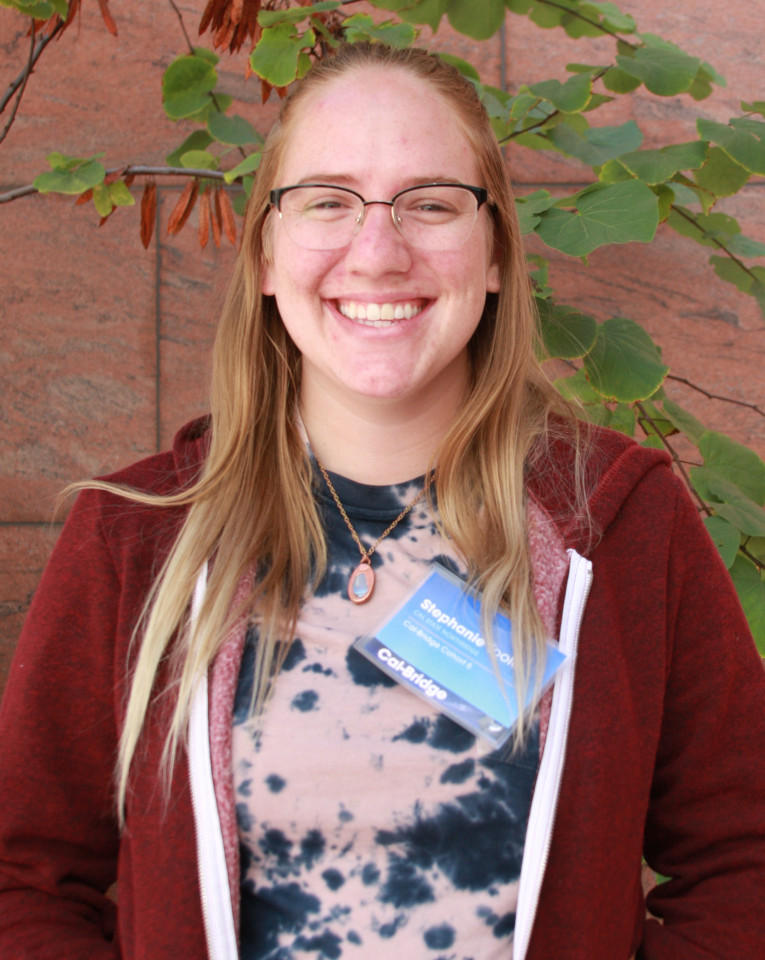
My name is Stephanie Toole and I am a senior studying physics at California State University, Northridge. When I began college in 2013 I chose to study political science and literature as a law school hopeful. Halfway through my third year I accepted that I was no longer passionate about law and moved to physics. Physics has provided me with concrete information and complex challenges that were not possible in another field. Despite my passion, I never thought I could consider pursuing graduate school because I struggled to see myself as a physicist. Fortunately, through research experiences and other opportunities like Cal-Bridge, I have come to the conclusion that graduate school is both a practical and possible future for me. Originally motivated to apply to Cal-Bridge because of an upperclassman’s glowing review, I realized that this program would supply me with the necessary confidence and information needed to apply to a physics PhD program.
When I became a Cal-Bridge scholar, I knew almost nothing about how to apply to graduate school. This program has supplied me with invaluable assistance in navigating the application process and has helped me stay on a track I would not have known existed. Cal-Bridge will not only give me the tools necessary to matriculate to a PhD program but will also be an essential element to my success as a PhD candidate. The most valuable aspect of Cal-Bridge has been the two mentors assigned to me. As professionals in the field they have provided me with support and advice that has been essential to my current successes. The opportunity to share my worries with my mentors and learn about their own experiences has been highly validating and helpful in removing unnecessary pressure that I place on myself. This freedom allows me to focus on my goals and aspirations without hesitation. I feel that my “late start” to the field as well as my gender have influenced my experience as a physics student in many ways. Luckily, Cal-Bridge has helped me recognize feelings of inferiority and shame originating from these topics and given me the tools to work past these ingrained thoughts. Being surrounded by other Cal-Bridge scholars who face similar obstacles has helped me realize that I am not an anomaly, but part of an amazing group of students who will have a profound effect on physics and STEM.
Mary Usufzy's Biography
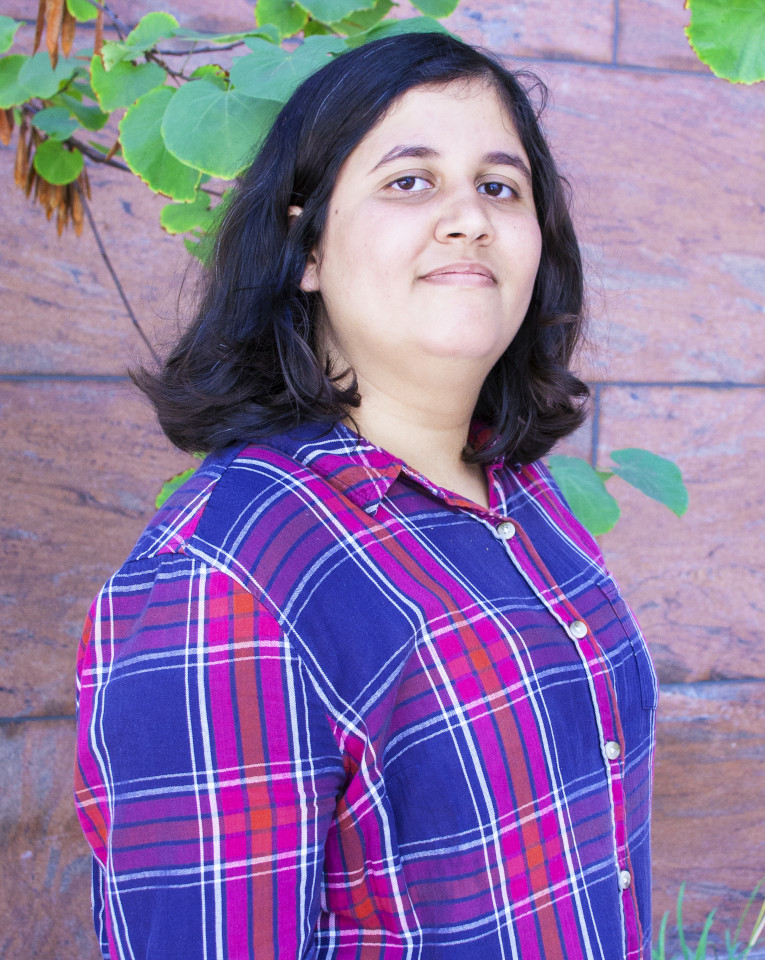
My name is Mary Usufzy and I’m a physics major at California State University, Long Beach (CSULB). Since I’m in my senior year, I’m planning to apply to graduate schools for a Ph.D in astrophysics. I have had a deep passion and an avid curiosity for the universe for as long as I can remember. I would look forward to trips to the Griffith Observatory and Discovery Science Museum to learn more about outer space and the solar system. I watched documentaries about black holes and read books about dark matter. The universe is vast and ever expanding and its complexity only furthers my enthusiasm for research. Thus, my appreciation for astrophysics motivates me to pursue graduate studies to learn more about the subject.
I applied to Cal-Bridge last year, but I didn’t expect to be accepted. I was overjoyed when I got into the program, since I was grateful for the opportunity to receive guidance in the graduate school application process. Furthermore, the Cal-Bridge program has supplemented and improved my undergraduate education. Through monthly workshops, I learned many valuable professional and academic skills, such as networking and Python coding. Cal-Bridge also provides mentors to guide and advise students in their journey to graduate education. In addition, the financial aid provided by the program alleviates the stress of paying for college. Overall, participating in this program has been an invaluable experience and I sincerely appreciate its efforts of preparing me for graduate school.
In addition, the Cal-Bridge program also stresses the importance of diversity. As a woman of color in STEM, I understand the importance of representation and inclusivity. Though the gender gap in physics has lessened in the last few decades, there’s still considerable change that could be made. Since research is a collaborative endeavor, it’s essential to have individuals from a variety of backgrounds to stimulate diverse thought and further intellectual creativity. In addition, as a student from a low socioeconomic background, I have faced many economic hardships and obstacles in my college education. Fortunately, through financial aid from the Cal-Bridge program, I was able to alleviate the burdens and stress of paying for college. Thus, my background has allowed me to understand the importance of increasing diversity in STEM for a more inclusive future.
In my free time, my hobbies include reading books and watching movies or tv shows. As an avid bookworm, I enjoy various genres of fiction, including fantasy and dystopia, and I love reading the classics too. I have also been writing a science fiction novel for a couple years now. I’m currently in the process of editing it and I hope I can publish it soon.
In summary, Cal-Bridge has changed the course of my academic and professional future for a career in astrophysics. I wouldn’t be where I am today without the help of this wonderful program. I’m looking forward to applying to graduate school in the fall semester and eventually completing my Ph.D in astrophysics.
Vidya Venkatesan's Biography
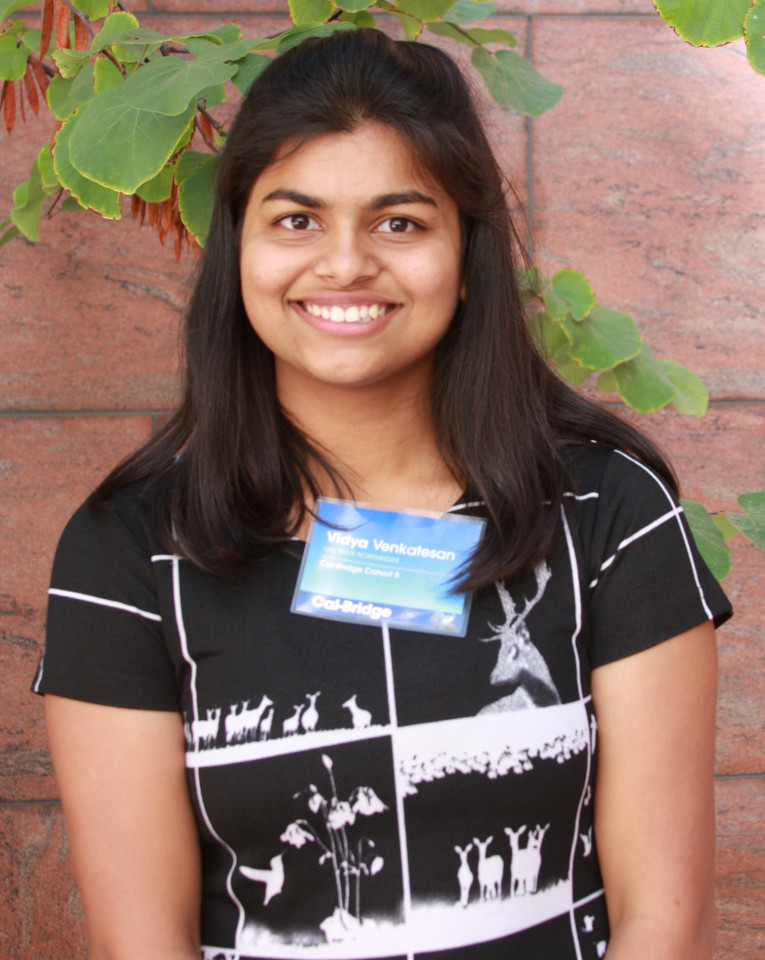
Vidya Venkatesan is an international student studying Physics with honors at California State University, Northridge. Growing up in India, she has been interested in finding answers to the very big questions: the origin of the universe, the “where do we come from,” and “why are we here.” This goal motivated her to visit planetariums in her town, which exposed her to how modern science approaches these fundamental inquiries. As she studied introductory material in physics in high school, she began to realize that getting a real, meaningful answer was not impossible. Later, she chose this major because she got the top score in the nationwide Physics board exam in her high school, and solving problems and learning esoteric concepts made her happy.
Additionally, CSUN’s Physics and Astronomy department’s inviting atmosphere and dedicated professors further inspired her to pursue this major. CSUN gave her a platform to do research, tutor physics to lower-division classes, and take up leadership roles in the Society of Physics Students club. It was her advisor, Professor Cadavid, and friend, Becky Flores, who recommended her to apply for the prestigious Cal-bridge program, and she will always be grateful to them.
Cal-Bridge program has invigorated her motivation to pursue a career in Academia by completing a Ph.D. and perform cutting-edge research in the field of Astrophysics. The unparalleled mentoring, workshop, and community that she received from Cal-bridge has helped her grow professionally. Being an international student limits her opportunity for summer research as most of the programs require applicants to be U.S citizens or permanent residents. However, the CAMPARE Summer program, which is a part of the Cal-bridge program, had no such restrictions. They accepted her during her sophomore year to gain her first-ever research experience at Stanford University.
Furthermore, they also allowed her to present her research at the American Astronomical Society (AAS) meeting at Seattle, Washington, where she won the Undergraduate Chambliss award for her poster presentation. In addition to winning the poster competition, she got to talk to several Astronomers and Astrobiologists. She also met her role model, Dr. Aomawa Shields, from UC, Irvine at the AAS, and Cal-bridge made it possible for her to work with Prof. Shields the following summer.
In addition to making her dream of researching exoplanets come true, the Cal-bridge program gave her a family far from home. Her Cal-bridge mentors, Professor Cristina Cadavid (CSUN), and Professor Manoj Kaplinghat (UC, Irvine), and peers invigorated her drive to achieve her career goals. The workshop and social events exposed her to a diverse group of scientists. This program has reminded her that no matter who we are or where we come from, through grit and hard work, it is possible to dream and thrive in Astrophysics. In the future, she wants to use her experience from the program to keep exploring the universe, mentor other students, participate in outreach activities, and advocate for diversity, equity, and inclusion in Academia.
North Scholars
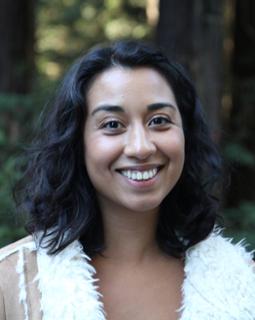
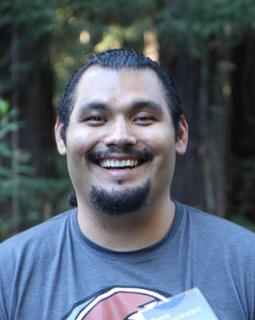
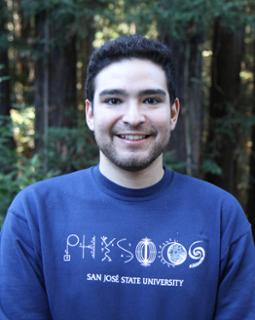
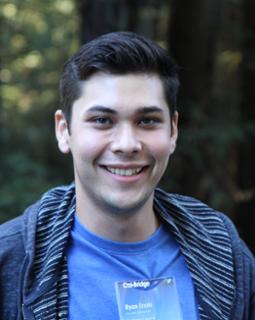
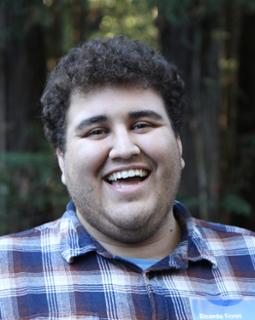
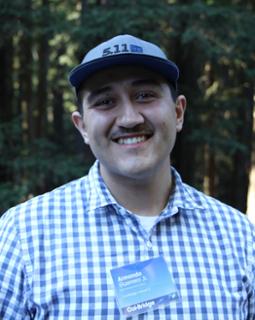
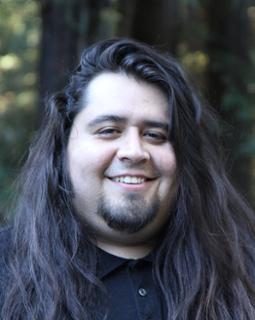
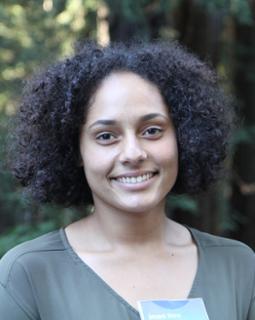
Ricardo Flores's Biography
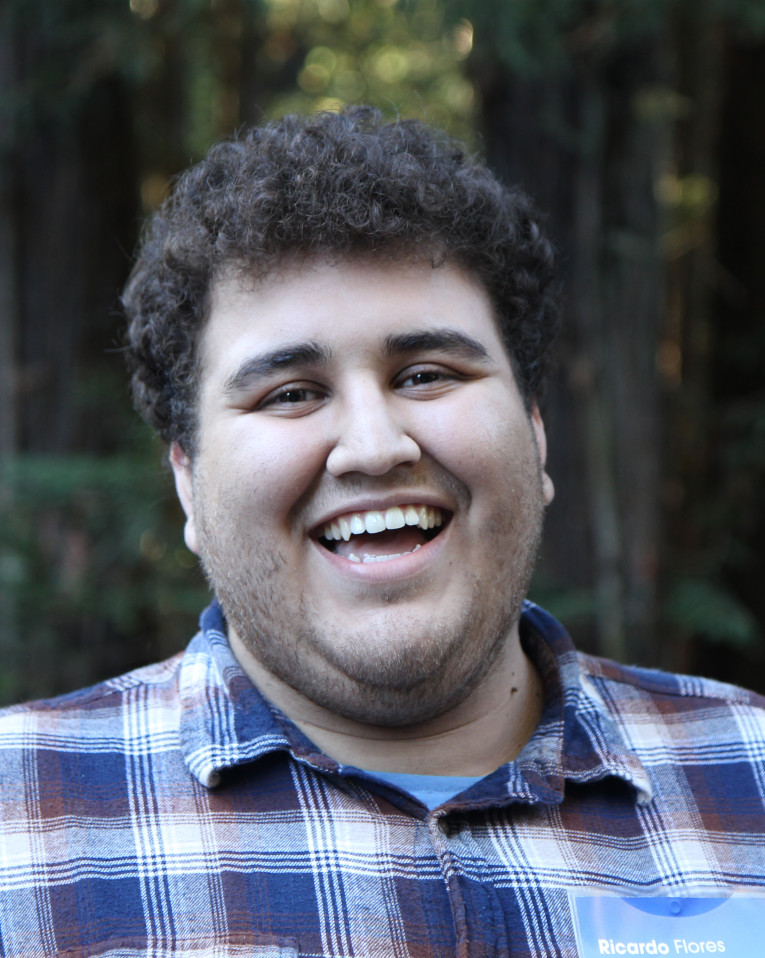
Ricardo Flores. I’m currently enrolled in San Francisco State University studying astrophysics.
Originally I wanted to become a doctor. As a minority and a first generation university student, that’s what I thought I had to become in order to be successful in life. Growing up I would tell any person that told me what I wanted to become that profession. I would watch medical shows to ‘prepare’ myself. That focus continued until my junior year of high school. I took a CNA, Certified Nursing Assistant, course that had me witness the view of medicine. Ideally, it wasn’t a good choice to be while a teenager but it was something I thought was a good introduction to become a doctor. Ironically, I never studied physics in high school. While entering San Francisco State as an astrophysics major was quite a change. However I always had a liking towards astronomy due to my 6th grade science teacher and a space book I had growing up. I would read that book everyday. I truly love learning about space. Because of that, I continued to pursue a major in astrophysics.
I saw the flyer about Cal-Bridge at the Physics and Astronomy hallways and I took a picture and never thought about it since. It wasn’t until the head of the department email me suggesting that I should apply. I applied and I wasn’t sure if I was going to get in. I did. After a year in the program, it has developed my study habits and gave me colleagues that I can go to for study groups or anything. The long term is that since Cal-Bridge is a program that people are starting to recognize as a high merit, it has given opportunities to work with famous observatories (i.e Carnegie). Just by having my foot in the field I want to work, it has opened my eyes to what the daily life of an astronomer. They gave me an early insight of what I could be doing in the future which is an experience everyone should get. It allows you to discover that you like and dislike in the field. Not only that, but Cal-Bridge also open the doors to connections to people who want to help you succeed.
There’s a policy/rule that someone who is accepted in the program must abide by that I found had a positive outcome to myself. It was having to finish the semester with B-’s in all your physics, astronomy, and related courses. At first, I thought that alone was going to be the most difficult thing and it was. I had to change the way I study and interact with other students. I made tons of study groups and the friends that I made in them were also in Cal-Bridge; that itself made it more impactful. We also have the same tutor that we went to.
On the last note, one thing that Cal-Bridge help me overcome is the fear that I don’t belong here. They give a numerous amount of support whether it be with essays or preparing us with applying to graduate school.
Armando Guerrero Jr.'s Biography
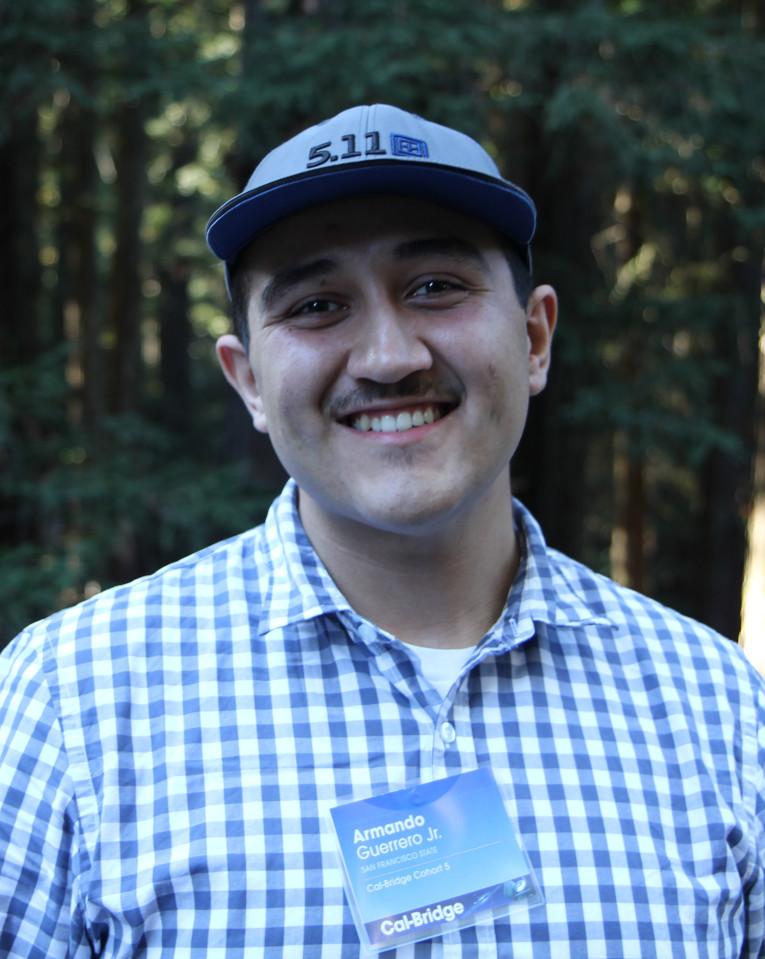
Ricardo Flores. I’m currently enrolled in San Francisco State University studying astrophysics.
Originally I wanted to become a doctor. As a minority and a first generation university student, that’s what I thought I had to become in order to be successful in life. Growing up I would tell any person that told me what I wanted to become that profession. I would watch medical shows to ‘prepare’ myself. That focus continued until my junior year of high school. I took a CNA, Certified Nursing Assistant, course that had me witness the view of medicine. Ideally, it wasn’t a good choice to be while a teenager but it was something I thought was a good introduction to become a doctor. Ironically, I never studied physics in high school. While entering San Francisco State as an astrophysics major was quite a change. However I always had a liking towards astronomy due to my 6th grade science teacher and a space book I had growing up. I would read that book everyday. I truly love learning about space. Because of that, I continued to pursue a major in astrophysics.
I saw the flyer about Cal-Bridge at the Physics and Astronomy hallways and I took a picture and never thought about it since. It wasn’t until the head of the department email me suggesting that I should apply. I applied and I wasn’t sure if I was going to get in. I did. After a year in the program, it has developed my study habits and gave me colleagues that I can go to for study groups or anything. The long term is that since Cal-Bridge is a program that people are starting to recognize as a high merit, it has given opportunities to work with famous observatories (i.e Carnegie). Just by having my foot in the field I want to work, it has opened my eyes to what the daily life of an astronomer. They gave me an early insight of what I could be doing in the future which is an experience everyone should get. It allows you to discover that you like and dislike in the field. Not only that, but Cal-Bridge also open the doors to connections to people who want to help you succeed.
There’s a policy/rule that someone who is accepted in the program must abide by that I found had a positive outcome to myself. It was having to finish the semester with B-’s in all your physics, astronomy, and related courses. At first, I thought that alone was going to be the most difficult thing and it was. I had to change the way I study and interact with other students. I made tons of study groups and the friends that I made in them were also in Cal-Bridge; that itself made it more impactful. We also have the same tutor that we went to.
On the last note, one thing that Cal-Bridge help me overcome is the fear that I don’t belong here. They give a numerous amount of support whether it be with essays or preparing us with applying to graduate school.
L Little's Biography
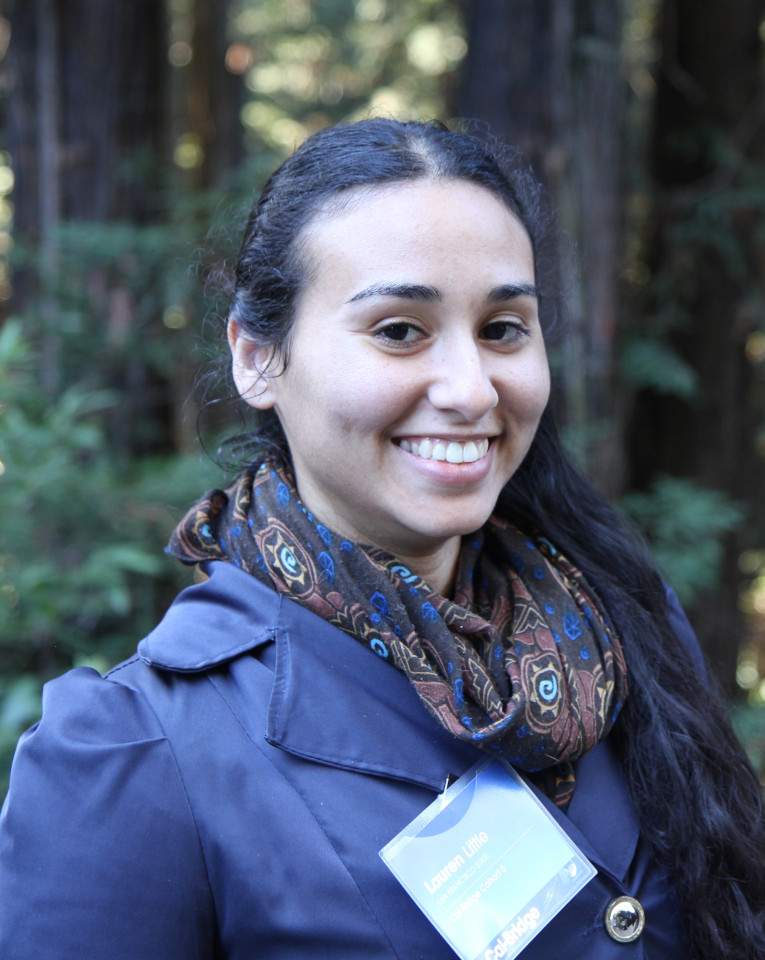
Lauren Little is currently working towards her undergraduate in Astrophysics at San Francisco State University. Her long-term goals are to obtain a PhD so she can work in emerging technologies and research that pertains to a better fundamental understanding of the solar system. Lauren has always had a curiosity towards the sciences which eventually led her towards physics. She believes that physics can be applied as generally or specifically as one chooses, which gives the physicist the freedom to use their knowledge for all manner of things. One of her personal interests that has influenced her future career goals is the mystery of space travel. Inspired by both real and fictional events, Lauren wishes to develop more efficient spacecraft that will allow human space travel to be safe and more frequent. Aside from human space travel, Lauren aims for these efficient spacecraft to be used to allow for more local solar system projects to be as enriching as possible for other researchers.
She applied to the Cal-Bridge scholarship by the suggestion of one of her professors. A major draw to the Cal-Bridge program was that the scholarship is focused on physics and astronomy PhD-oriented students it is intentionally created to help support these students in a very specific manner. The most helpful support tool offered by the Cal-Bridge program is the mentors assigned to the student. The two professors are useful to reference for everything from how to choose a graduate school to receiving help on homework problems. The support received through the program via tutoring and personal mentorship have allowed Lauren to maintain good standing in classes while also gaining a deeper understanding of the subjects. The Cal-Bridge program helped her get into an REU for the summer that not only gives real-time research experience, but also gives a glimpse of what the future of being a researcher is actually like. She plans to graduate with her undergraduate by Spring of 2020 and move on to a PhD program that best fits her interests.
